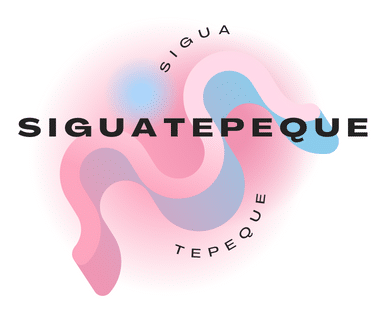How to Train a Parrot to Stop Screaming for Attention Without Punishment?

Squawking, screaming, and incessant vocalization: if you’re a parrot owner, you’ll be familiar with these behaviors. Parrots, part of the bird family, are renowned for their vocal prowess. But what happens when your avian companion’s vocal expressions become too loud and too frequent? How can you train your parrot to reduce screaming for attention without resorting to punishment? This article offers you proven, professional advice to help you manage your parrot’s behavior. Let’s dive into the world of parrot training, focusing on effective, non-punitive strategies.
Understanding Parrot Behavior
Before you can begin to effectively train your parrot, it’s crucial to understand the bird’s behavior. Parrots are intelligent creatures, and their vocalizations are one way of communicating their needs, emotions, or state of health. Sometimes, screaming may be a sign of distress, boredom, or attention-seeking behavior.
Also read : What Are the Best Ways to Stimulate Natural Hunting Instincts in a Domesticated Cat?
Understanding the reason behind the screaming will help you determine the best approach to manage it. For instance, if your parrot is bored, increasing its social interaction and playtime could help reduce the noise. If it’s seeking attention, you’ll need to adjust your responses to its calls.
Using Positive Reinforcement
Positive reinforcement training is a powerful tool to modify a parrot’s behavior. It revolves around rewarding desirable conduct and ignoring undesired actions. By using this approach, you can shape your bird’s behavior over time, encouraging quieter, more acceptable vocalizations.
Also to read : How to Introduce a Rescue Rat to a Current Rat Colony Safely and Effectively?
When your parrot behaves in a desirable manner, for instance, when it’s quiet, give it a treat, praise, or attention. This will reinforce the good behavior. Conversely, when it screams, don’t respond immediately. This tactic will show your parrot that screaming will not earn it what it wants.
Setting Up a Suitable Environment
The environment you provide for your parrot plays a significant role in its behavior. A cramped cage, lack of stimulating toys, or being positioned in an overly noisy or quiet room can all contribute to your bird’s increased screaming.
Set up a spacious cage for your parrot in a room with moderate noise levels. Make sure it has plenty of toys to keep it engaged and mentally stimulated. A bored parrot is more likely to resort to screaming for attention. Similarly, placing the cage in a room where it can see and interact with family members will also help, as parrots are social birds.
Implementing a Fixed Routine
Parrots thrive on consistency. Implementing a fixed routine for your bird can help reduce anxiety and screaming. This routine should include consistent wake-up and sleep times, feeding schedules, and regular periods for social interactions and play.
Stick to this routine as much as possible, but be flexible enough to adjust it if it’s causing more harm than good. Observing your parrot’s behavior and making necessary changes is the key to a successful training regimen.
Patience and Consistency is Key
Training your parrot to stop screaming for attention is not a quick fix. It requires time, patience, and consistency on your part. Stick to the routines and reinforcement techniques, and don’t waver in your response to screaming.
Remember, it’s essential to avoid punishment. Parrots don’t understand the concept of punishment, and it will only lead to increased fear and anxiety, which could worsen the screaming behavior. Your parrot will learn much faster from positive reinforcement than negative actions.
Training a parrot to reduce its screaming for attention requires a deep understanding of its behavior, implementation of positive reinforcement, suitable living conditions, consistent routines, and above all, patience. With time, effort, and understanding, you can help your parrot express itself in quieter and more acceptable ways.
Understanding the Impact of Negative Reinforcement and Strobe Lights
While you might think that using negative reinforcement or strobe lights could be useful in training your parrot, these methods are best avoided. Negative reinforcement involves removing something enjoyable, making it less effective and potentially harmful in the long term.
Strobe lights, for instance, are often used as an aversive training tool, but they can be stressful and disorienting to parrots. The sudden flashes can frighten your bird, leading to increased anxiety and a potential increase in screaming.
Negative reinforcement doesn’t work well with parrots because it fails to teach them what good behavior looks like. Instead, it only shows them that certain actions can lead to unpleasant consequences. This can create confusion and stress for the bird, making it even more likely to scream for attention.
Parrots use their body language to communicate, and they can pick up on your body language as well. Tension or frustration on your part could increase the parrot’s anxiety, leading to more screaming. It’s important to remain calm and patient during the training process as your mood can greatly influence your parrot’s behavior.
Using Social Media and Online Communities
In the age of technology, social media and online communities are valuable resources for parrot owners. Platforms like Facebook, Instagram, and dedicated bird forums are filled with bird owners sharing their experiences, tips, and tricks on parrot training.
By joining these communities, you can learn from others who have faced the same challenges. You can share your own experiences, ask questions, and receive advice from well-experienced parrot owners. Plus, these communities can provide emotional support when the training becomes challenging.
You can also use social media to share the progress of your parrot’s training. Sharing things like a video of your parrot exhibiting good behavior can not only be a fun experience but also a way to reinforce and celebrate your parrot’s progress.
Conclusion
Training a parrot to stop screaming for attention is a journey that requires time, patience, and consistency. It’s about understanding your parrot’s behavior, learning to respond appropriately, and setting up an environment that encourages good behavior.
Positive reinforcement is a key aspect of this journey. Rewarding your parrot for good behavior and ignoring the unwanted screaming can gradually shape its vocal expressions. At the same time, avoid using negative reinforcement or confusing tools like a strobe light, as these can lead to increased anxiety and worsened behavior.
Implementing a routine can provide a sense of security for your parrot, reducing its anxiety and the need for excessive vocalization. Remember to keep the bird cage in a room where the parrot can interact with family members, as parrots are social creatures.
Finally, don’t hesitate to use social media and online communities as resources. These platforms are not only a treasure trove of advice and tips but can also provide the emotional support needed during this journey.
Remember, the ultimate goal here isn’t to stop your parrot from vocalizing, but to help it express itself in quieter, more acceptable ways. With time, patience, and consistent effort, you’ll be able to enjoy a healthier, happier relationship with your parrot.
